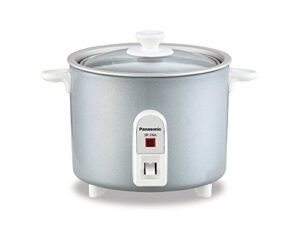As you know, I’m a bit of a rice aficionado, but I have to confess that until a few years ago I hadn’t even heard of Arborio rice. However, once I tried it, I was a true convert. It’s not the easiest rice to cook but with a bit of practice, and the advice in this post even novice cooks should be able to cook an impressive and savory Arborio recipe. So, without further ado, let’s look at my 5 top tips for cooking perfect Arborio rice. But first, some background…
Table of Contents
ToggleWhat is Arborio Rice?
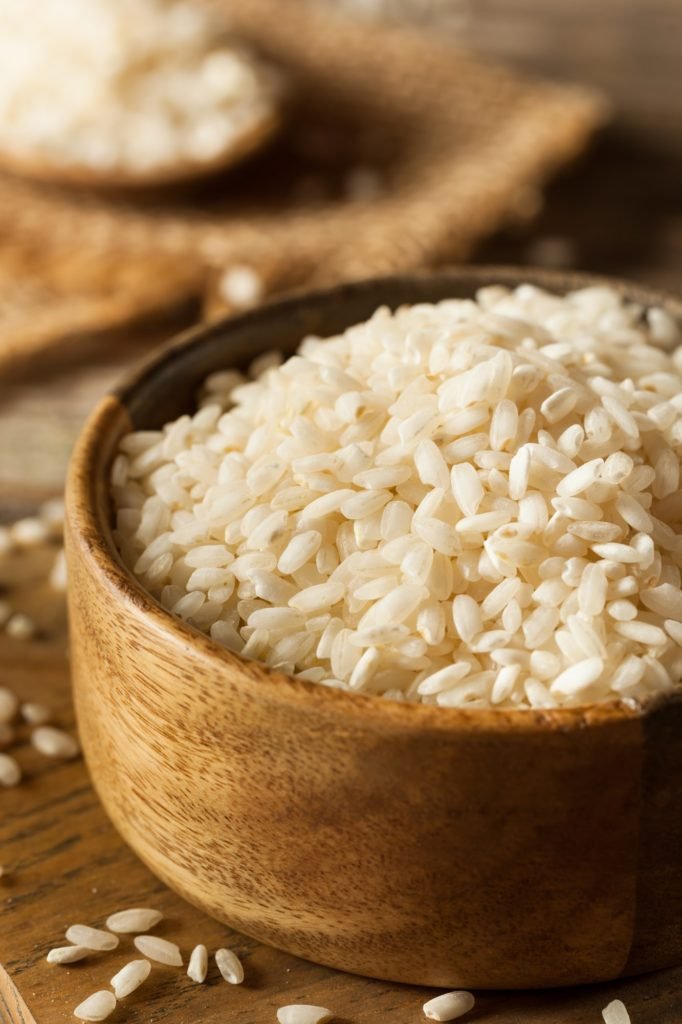
I guess everyone has eaten or at least knows about creamy risotto rice but I’m also guessing that most of you have never tried Arborio rice. Well, if that’s the case, trust me, you really are missing out. You see Arborio rice comes from an Italian variety of “superfino” or superfine rice.
It’s name is derived from the Northern Italian town of Arborio located in the beautiful Po Valley region. However, although its roots are in Italy, you can now find Arborio rice being grown around the world and even here in the US.
My Favorite Arborio Rice
The oval grains are a rich pearly white color and about a quarter of an inch long, so it’s not as long as Basmati rice but has the same rich texture when cooked. It does have quite a starchy content and comes in both white and brown varieties although most dishes I have eaten uses the white variant.
Because of its creamy texture, Arborio rice is often used for making rich risotto but its also great as a dessert rice for puddings and even for Minestrone soup.
But, how do you cook the perfect Arborio rice? Let’s find out!
5 Simple Ways To Get Perfect Arborio Rice
As I mentioned above, Arborio rice is popular for making Risotto but its so tasty you can enjoy it on its own or as part of almost any other kind of rice dish, including Sushi.
But, its not the easiest variety to cook so, to help you get the best possible results, I’ve compiled 5 tips that I use every time I cook Arborio rice.
Tip 1: Rinse Well

Unlike other rice varieties where it’s essential to rinse the rice before cooking, depending on the dish, Arborio rice doesn’t always need to be rinsed.
To make it simple, let’s set it straight, we will be preparing Arborio rice like a bowl of regular white rice and not the creamy risotto.
Risotto is known for its creaminess that only Arborio rice can make, but if you are preparing it regularly, you can rinse the normally, BUT, Do Not crush or overdo the rinsing.
Rinsing the grains is essential to remove dirt and dust. However, you need not mix the grains vigorously.
Here’s how I rinse my Arborio rice:
- Most important – don’t soak it unless you are cooking risotto!
- Empty the rice into a mesh strainer and place it under cold running water – and it should be cold!
- Gently fold the grains only. Wash at least once or twice just to remove dust and impurities
Soaking is only done when you are cooking risotto. This is because the grains are broken down to make it softer and starchier which is the main component of this dish.
Tip 2: Toast For The Perfect Texture
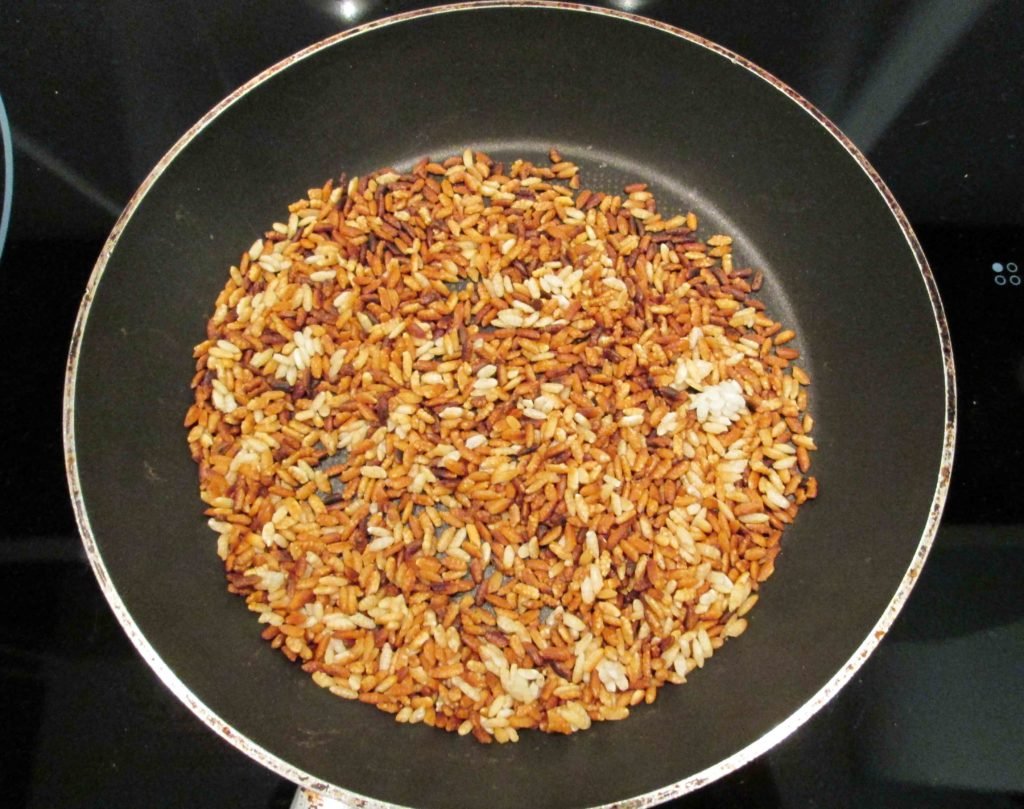
Arborio is high in starch and is liked because it can produce a wonderful sticky dish but that’s not the only trick up its sleeve because by simply toasting the grains you can achieve a whole different, and very nice, texture,.
Many beginners often overlook this step when cooking Arborio rice but, I believe, its one of the best methods to make your dish sing!
Toasting also releases a wonderful aroma and makes it taste a little nutty.
How to toast Arborio rice:
- Heat a pot or saucepan over medium-high heat and add some butter or olive oil – sorry no rice cookers for this step!
- Optionally, add some spices
- Add the Arborio rice and stir constantly until the oil is absorbed
- Toast the grains for about a minute then once it gives off a nutty smell, it’s then ready!
After you have toasted the grains, set them aside and prepare for the next tip.
Tip 3: Add The Water Gradually

Unlike when I’m cooking regular rice where I simply add the full amount of water or stock before cooking, I prefer to add it gradually when cooking Arborio. I still keep to my usual 4:1 water ratio, but I pour it in when the dish is ready for it.
I find that adding the liquid gradually helps to fine-tune the texture of the rice to get it exactly how I want it. I also prefer to use chicken stock rather than water as this adds extra flavor but, really, it depends on the dish.
Here’s how to add the liquid to your Arborio rice and make it perfect:
- After toasting your Arborio rice (see tip #2 above), add a cup of water or stock and set your cooker for a medium heat.
- Keep an eye on it until the rice absorbs all the liquid and starts to simmer. Don’t start with too high a heat – slow and gentle is the secret with Arborio rice.
- When the first cup is absorbed, add another half a cup and stir
- Keep pouring half a cup until the rice is cooked. You know when the rice is cooked when the texture has changed so you probably need to adjust the entire 4 cups of liquid needed.
This is perhaps the trickiest part of cooking Arborio rice as you have to adjust the amount of liquid depending on the cook but, as we shall see later, with the right rice cooker, you can still automate a lot of this work.
Tip 4: Cook Al Dente!
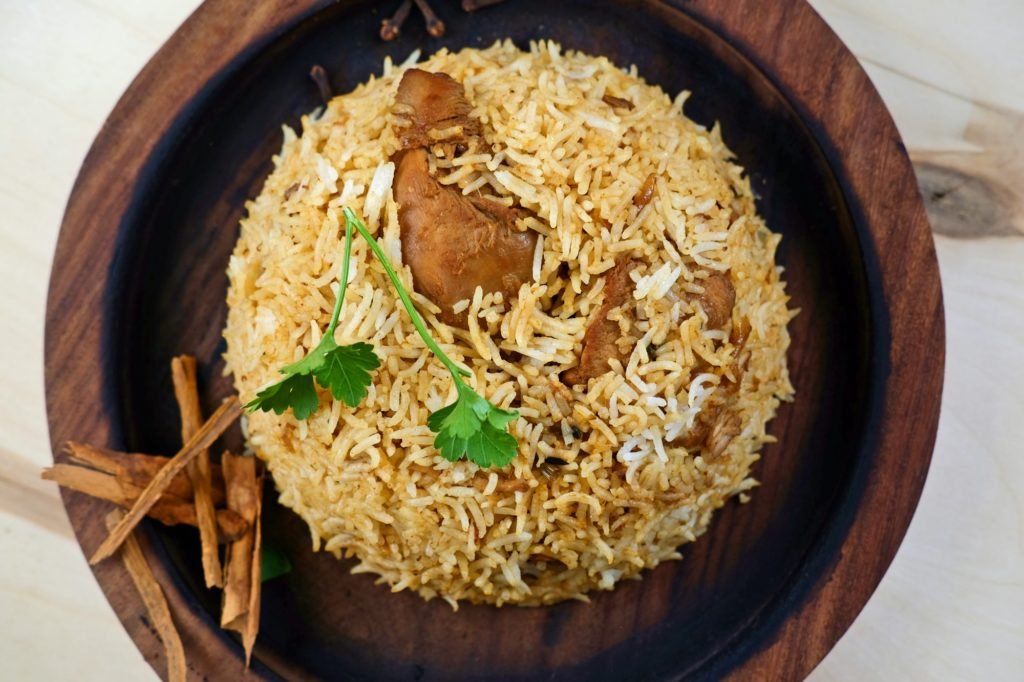
Al Dente: (of food, typically pasta) cooked so as to be still firm when bitten.
In other words, never overcook Arborio rice!
Overcooking will make the rice soggy, but we want that rich cream texture so it’s essential that you dial in the right cooking time and always keep a watchful eye on your dish. The hardest thing to get right when cooking Arborio rice is the timing but, once you nail it, you’ll appreciate the effort.
Patience is essential in cooking this type of rice because you have to concentrate on the texture of your rice. It should be similar to pasta, Al Dente.
Arborio is actually very similar to pasta in a number of ways. The grains are full of starch so are hard when under-cooked but mushy when overcooked. To mis-quote Goldilocks – it’s shouldn’t be too hard or too soft – it should be cooked just right!
So, let’s continue the process!
- Gradually add the water in during the cook while stirring the dish continuously. Keep a close eye on the changing appearance of the grains
- Try to maintain a creamy – not mushy – consistency. This should be quite easy to do because of the toasting process outlines int tip#3.
- Once you see a pasta-like al dente texture, then you are done! This usually takes about 20 minutes of cooking time.
- Let the remaining steam to cook the rice for a few moments for the perfect texture!
Tip 5: Use a Rice Cooker!
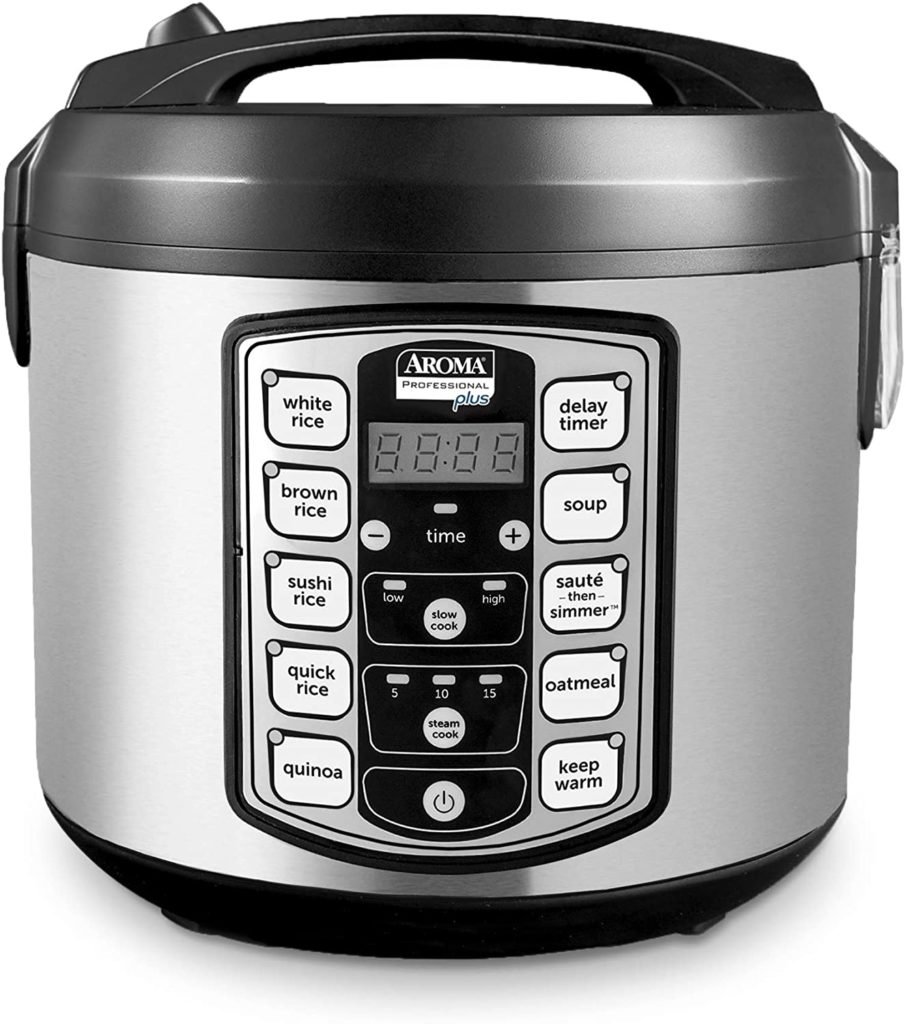
Of course, you knew I would get there eventually. Cooking Arborio rice, or any other variety for that matter, can be done the old-fashioned manual way but why would you want to do that? These days the whole process can be handled much simpler, cleaner and with less work by using a rice cooker!
In most cases, you can just throw the rice in – after following the steps above, of course, and let the cooker do its job. Many cookers have pre-set programs to help you but, even if they don’t its still much easier to set the timer and go and do something more interesting that watching a pot boil.
The only down-side is that, because of its starchy nature, cleaning your rice cooker takes a bit longer so remember to follow my rice cooker cleaning tips as well.
Do I need to use a Special Rice Cooker for Arborio Rice?

Short answer – no. As long as you bear in mind all the tips I’ve shared above, then practically any rice cooker will do.
However, there’s no doubt that some cookers make the job a lot easier, For example, my personal favorite, the Zojirushi NS-ZCC10 is equipped with Neuro-Fuzzy logic which means, it uses advanced technology to monitor and adjust the cooking time and temperature depending on the conditions and, so, give a consistently good cook.
So, let’s say, you’re cooking Arborio rice, which as we have said, is quite a difficult rice to get right. normally, you would have to spend a lot of time watching the cooker, stirring, adjusting the water, and, generally, taking a lot of valuable time to get the best results. Well, with the Zojirushi NS-ZCC10, most of the drudge work is done for you – by the cooker. All you have to do is set the right program and then go and do something more interesting
If you put too much water in then this cooker will automatically adjust the heat and the cooking time until all the excess water is absorbed. It’s practically foolproof and means less chance of burning the rice. I can honestly say that during all of the time I have been using it, my Zojirushi has never delivered anything less than perfect results!
Features of Zojirushi NS-ZCC10:
- Advanced Neuro-Fuzzy Technology
- Compact design with retractable power cord
- 3 Reheating features: Automatic Keep Warm, Reheating Cycle, and Extended Keep Warm
- Colored LCD Control
- 2-settings Delay timer
- Spherical non-stick inner cooking pan for even heat distribution
- Programmable beep indicator
How to Cook Arborio Rice using Zojirushi NS-ZCC10
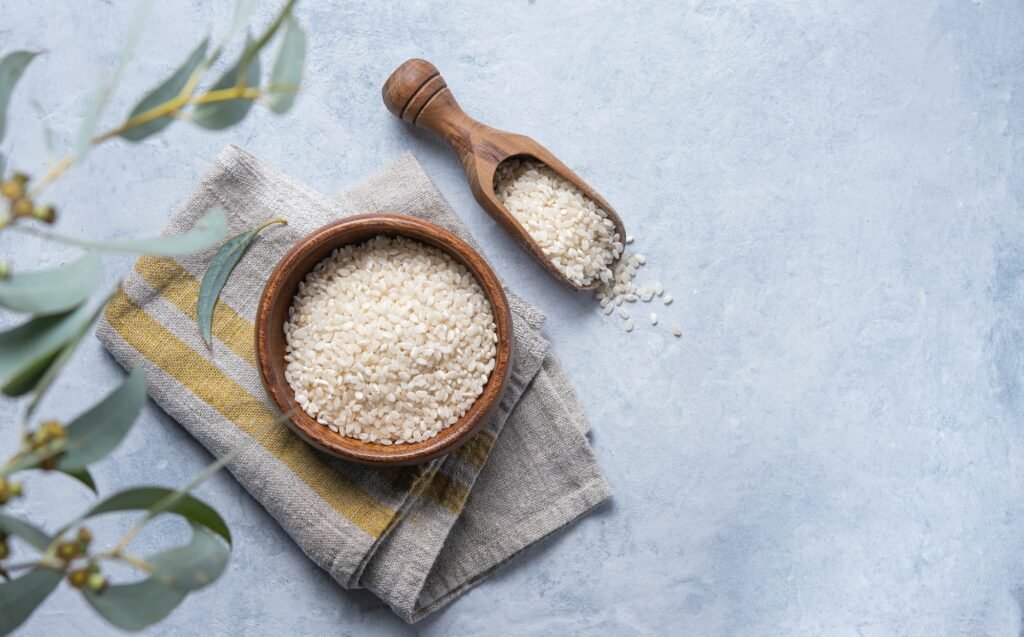
The Zojirushi NS-ZCC10 looks quite intimidating at first – there are a lot of functions on there – but once you get used to it you will find it’s actually very easy to use. I also happen to like the futuristic curved looks – but that’s a personal preference.
Cooking rice using this machine is as easy as putting in the right amount of rice and water, selecting your cooking preference pressing the cook button!
- Measure the right amount of rice you need for your meal and place it in the inner pot. Most rice cookers come with measuring cups, for example, my Zojirushi machine has clear cups that are best for white, brown, semi-brown, and sweet rice. It also has a green cup for rinse-free rice but, if I have any criticism it’s that both of these cups are quite small compared to the standard measuring cups that I’ve used.
- Rinse the rice at least twice without overdoing it. Follow the rinsing tips I shared above.
- Add the correct rice-to-water ratio according to the variety of rice you are cooking
- Select the Regular cooking setting from its control panel
- Wait until your Arborio rice is cooked!
Cooking Arborio rice in the rice cooker will come out as good as that done on a stovetop but with a lot less hassle.
How to Cook Arborio Rice for Sushi
Cooking arborio rice for sushi requires precision and patience. To get the perfect fluffy consistency each grain should be tender but separate and that’s not as simple as you may think.
Start by rinsing the rice in cold water, rubbing it between your hands until the water runs clear, then drain it through a fine-meshed sieve or colander and set aside for about 30 minutes to allow it to dry out slightly.
Next, place the rice in your rice cooker and add enough cold water to cover the rice by 1 cm (1/2 inch). Then, select the white rice setting if your cooker has one. This ensures that all the grains become uniformly cooked and helps achieve the sticky texture desired for sushi.
Once cooked, switch to keep warm mode and let it stand for at least 10 minutes before transferring the cooked rice onto a wide shallow pan or plate and spread out evenly to cool.
Be sure to fluff with a fork occasionally so that each grain is separate before serving or any Rice Balls or Sushi Rolls are formed.
If you want to find out how to cook perfect sushi rice then I have an article dedicated to that topic here.
Summary
So, hopefully, I have managed to convince you that cooking Arborio rice is not as tricky as you may have thought.
And, with my 5 foolproof cooking tips for perfect Arborio rice there’s no way you can much things up 🙂
In this post, I covered the essential steps you need to take to get great-tasting Arborio rice every time. I showed you how to get the mix right, how to rinse the rice, and how to get the perfect creamy texture. Then, to top it all off, I showed you how to get a rice cooker that can do all the hard work for you.
I really hope you found it interesting and informative and, of course, as always, if you have any questions or comments I would love to hear from you.
Enjoy Cooking!
Hopefully, you enjoyed this post and, if you would like to find out more great ways to use your rice cooker, I have posts covering how to cook pasta, fish, or even lentils. Who knew that a rice cooker could be so versatile ?!






